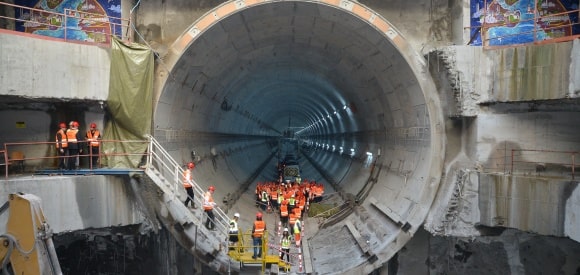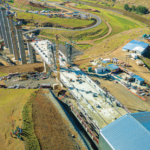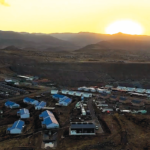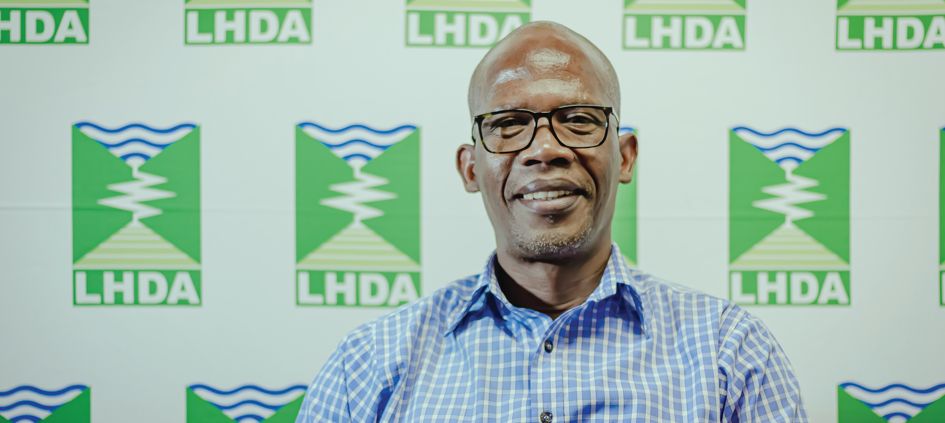… drives economic growth
Staff Reporter
Phase II of the Lesotho Highlands Water Development Project (LHWP) has employed over 8,000 Basotho, including approximately 3,000 unskilled labourers from the project’s surrounding areas, Finance and Development Planning Minister Dr. Retšelitsoe Matlanyane told parliament this week during her mid-term budget speech for the 2024/2025 fiscal year.
She outlined the scope of Phase II, which includes the construction of the Polihali Dam and reservoir, water transfer tunnel and the associated access roads, bridges, accommodation, electrical transmission lines and telecommunications infrastructure.
“This esteemed house will recall that the key infrastructure initiatives for the Lesotho Highlands Water Project (LHWP) Phase II encompass the construction of the Polihali Dam, the Polihali to Katse transfer tunnel, and three bridges: Senqu, Khubelu, and Mabunyane,” she said.
“Mr. Speaker, the nation has witnessed the arrival of the Tunnel Boring Machine, and construction is actively underway, with the Polihali Dam currently at 16 percent completion and the tunnel at 22 percent,” she added.
She highlighted that the Senqu Bridge, designed to improve connectivity across challenging terrain, is 59 percent complete, employing 95 unskilled and 55 skilled workers.
“Mr Speaker, at this point, the whole project has hired more than 8,000 Basotho, with around 3,000 of those being unskilled labourers from the surrounding project area,” the minister said.
To bolster skills development, she said the Lesotho Highlands Development Authority (LHDA) has introduced a young professional program. This initiative engages graduates from fields such as engineering, architecture, archaeology, and environmental and social sciences, providing them with practical experience to advance their careers.
Matlanyane also emphasised the project’s economic significance, noting its role as a key driver of growth. “The domestic economy is projected to grow by 2.4 percent in 2024, fueled by ongoing mega-projects such as LHWP Phase II and the Millennium Challenge Corporation (MCC) Compact II, as well as growth in the services sector,” she said.
She also announced that the Central Bank of Lesotho (CBL) had reduced the policy rate by 25 basis points to 7.5 percent. This reduction, she explained, is expected to lead to lower domestic interest rates, including the prime lending rate, and encourage economic activity.
“The majority of central banks, both in developed and emerging market economies, have lowered policy rates in response to declining inflationary pressures,” she added.
Matlanyane highlighted that LHWP-II has not only spurred economic momentum but also contributed significantly to transportation, logistics, and financial services development.
“This project is instrumental in fostering growth and has successfully generated numerous job opportunities for young professionals in Lesotho,” she said.
Phase II requires acquiring approximately 5,000 hectares of land, much of which will be submerged under the Polihali Dam and its reservoir.
The inundation will affect the valleys and tributary catchments of the Senqu and Khubelu Rivers, impacting local livelihoods. Homesteads, cultivated fields, trees, grazing land, and natural resources will be lost, while access to facilities will be disrupted.
Permanent land acquisition is also necessary for infrastructure developments, including access roads, power lines, and residential and office accommodations, with some land being temporarily occupied during construction.
The 1986 Treaty between Lesotho and South Africa, along with the Phase II Agreement, obligates both nations to take measures to ensure that project implementation protects the environment and prioritizes the welfare of affected communities.
The LHDA has been tasked with managing resettlement risks and ensuring the restoration of affected livelihoods.
“Mr. Speaker, this phase includes housing resettlement and the relocation of 1,170 graves as part of the resettlement process,” Matlanyane explained on Wednesday.
LHWP is a landmark multi-phase initiative aimed at supplying water to South Africa’s Gauteng region while simultaneously generating hydroelectric power for Lesotho.
The project was formalised through the 1986 Treaty between Lesotho and South Africa, reflecting a cooperative effort to harness the Senqu/Orange River’s waters in the Lesotho Highlands for the mutual benefit of both nations.
The LHWP involves constructing a series of dams and associated infrastructure to achieve its dual objectives. Phase I, successfully completed in 2003 and officially inaugurated in 2004, marked a significant milestone in regional water resource management and energy generation.
The project has since advanced to Phase II, which is currently in progress, further enhancing its transformative impact on water security and economic development in the region.
Summary
- She outlined the scope of Phase II, which includes the construction of the Polihali Dam and reservoir, water transfer tunnel and the associated access roads, bridges, accommodation, electrical transmission lines and telecommunications infrastructure.
- Speaker, the nation has witnessed the arrival of the Tunnel Boring Machine, and construction is actively underway, with the Polihali Dam currently at 16 percent completion and the tunnel at 22 percent,” she added.
- The project was formalised through the 1986 Treaty between Lesotho and South Africa, reflecting a cooperative effort to harness the Senqu/Orange River’s waters in the Lesotho Highlands for the mutual benefit of both nations.

Your Trusted Source for News and Insights in Lesotho!
At Newsday Media, we are passionate about delivering accurate, timely, and engaging news and multimedia content to our diverse audience. Founded with the vision of revolutionizing the media landscape in Lesotho, we have grown into a leading hybrid media company that blends traditional journalism with innovative digital platforms.








